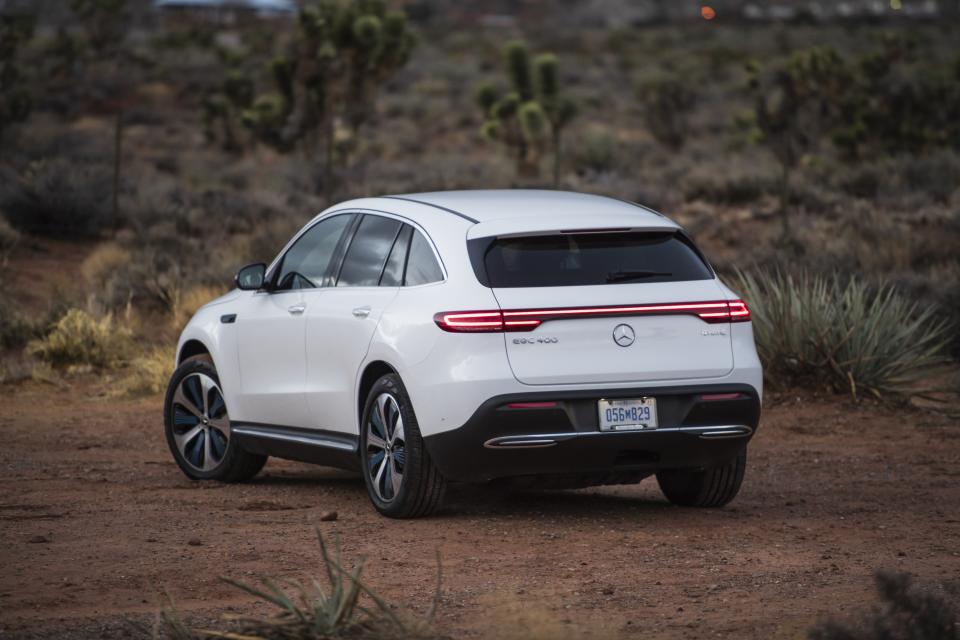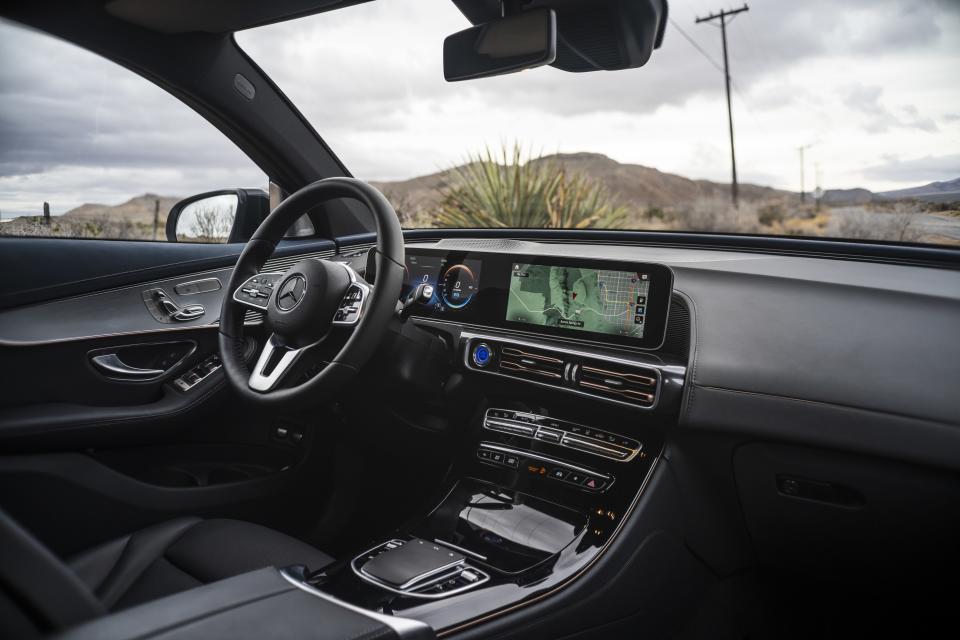Here Is Mercedes-Benz’s Answer to Tesla's Model X
The Mercedes-Benz EQC 400 is the brand’s first production battery-powered, all-electric SUV. A direct competitor to Tesla’s Model X, the four-door, five-passenger hatchback is scheduled to hit the U.S. market in early 2020, and had its American premiere at the Consumer Electronics Show (CES) in Las Vegas this week. Like many of the new electric vehicles (EVs) from long-standing automotive manufacturers (including Porsche, Audi, BMW, and Ford) slated to go on sale soon, the EQC 400 is a midsize luxury crossover. This makes sense, as luxury crossovers are among the most popular vehicles in the U.S. (and, increasingly, worldwide.) Because of their rather bulky and high-riding nature, they are also a category of vehicle that lends itself quite readily to adaption to electric power; the broad, thick array of batteries needed to motivate these vehicles can be stacked in the already elevated floor without affecting the overall design the way they might in a sleek sedan or sports car.
“We wanted to make it a Mercedes, to look and feel like a Mercedes, but also show it’s electric,” says Bastian Schult, manager of testing for the EQC line. “We will be more progressive in our design in future EVs—cars, compact crossovers, big SUVs, ten models of which will be on sale in the next three years. But customers for this first car, for midsize SUVs around the world, they prefer a more conventional experience, so that is what we went for in this car.”
With a 240-mile range from its 80 kWh battery and the ability to charge nearly 200 miles in about 40 minutes on a 110 kW DC fast charger, the EQC, like the rest of the forthcoming crop of EVs, is intended to alleviate consumers’ “Range Anxiety”—the fear that they will run out of juice and be stranded. Because of its market position, and the fact that it wears the three-pointed star from the best-selling luxury automotive brand in the U.S., part of the mission of the EQC 400 is to help bring electric cars out of the realm of early adopters and fast followers, and into the mainstream.

Mercedes-Benz EQC: US Premiere auf der CES 2019 in Las Vegas.//Mercedes-Benz EQC: US Premiere at the 2019 CES in Las Vegas.
This differs somewhat from the mission of Tesla, which, like many Silicon Valley companies, founded its business on a revolutionary and evangelical mission to “disrupt” the internal combustion engine and the automobile business. This led to the adoption of outré, atypical, and often difficult-to-operate (or difficult to justify) styling and feature decisions. This includes globular/anime exterior design, de-contented interiors with every function (including the instrument panel) relegated to a large tablet in the middle of the dashboard, electronically extending flush-mounted door handles that can be inaccessible or nonfunctional when iced over in the winter, and, in the case of the Model X, rear “falcon wing” doors that fold up and give the car the appearance of a Transformer, but render the doors difficult to open in an average garage or tight parking space.
Tesla was selling splashy weirdness to people who wanted to be noticed for the unconventionality of their choice. Mercedes is selling what it always has: quality and stolidity. “We’ve given this car the appearance and driving behavior of a Mercedes, especially in terms of noise reduction, which is very relevant for an electric power train,” Schult says, referring to the fact that electric cars, with their silent motors, don’t have the familiar and “white noise” effect of a gasoline engine to drown out things like wind and tire noise. “We wanted to create the full package of the vehicle, the most calm, most silent, most smooth.” Even the drive experience—the way the “gas” and brake pedals feel—is set up to mimic the behavior of an internal combustion engine.

Mercedes-Benz EQC: US Premiere auf der CES 2019 in Las Vegas.//Mercedes-Benz EQC: US Premiere at the 2019 CES in Las Vegas.
Of course, the market demands advances and fresh features, and the EQC also delivers these. Perhaps foremost among these is the new MBUX (Mercedes-Benz User Experience) an Artificially Intelligent infotainment system. It features augmented video for its navigation feature, is powered by partnerships with Yelp, and recognizes natural speech requests, à la Alexa or other digital assistants (like “Hey Mercedes, find me an inexpensive Italian restaurant near my destination”).
The MBUX also features an in-depth screen that not only shows customers how the battery is behaving in terms of transferring power to the wheels (and regenerating energy through friction under braking), but it also walks drivers, on the navigation screen, through all the steps they would need to plan their battery-powered trip, “Where the charging stations are, how long you should estimate to be there to charge up, even what type of charger to use,” says Schult. “In order to transfer them to the EV world of Mercedes-Benz, they need to be directed to appreciate these new features in an EV.”

